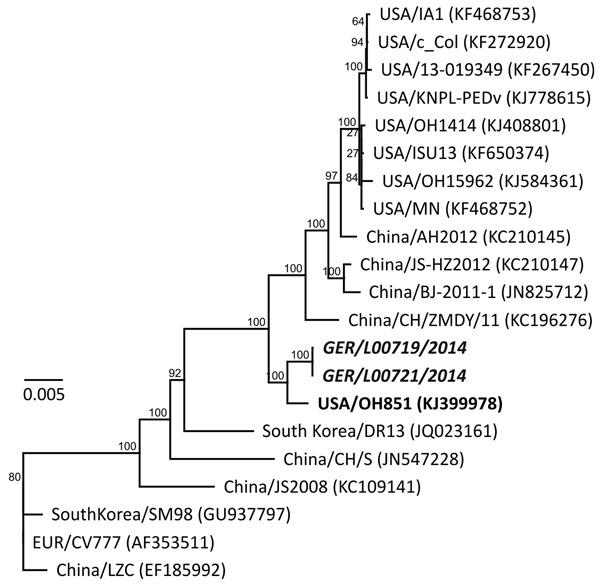Volume 21, Number 3—March 2015
Dispatch
Comparison of Porcine Epidemic Diarrhea Viruses from Germany and the United States, 2014
Figure 2

Figure 2. Phylogenetic analysis based on 21 full-length porcine epidemic diarrhea virus (PEDV) genomes. The new strains from Germany (PEDV/GER/L00719/2014 and PEDV/GER/L00721/2014, in boldface and italics) and the new 2014 PEDV variant from the United States (OH851, in boldface) were included and compared with current circulating strains from the United States and China. The tree was constructed by using PhyML (11). Numbers above branches indicate proportions calculated from 1,000 bootstrap replicates: The scale bar represents nucleotide substitutions per site.
1These authors contributed equally to this article.
Page created: February 18, 2015
Page updated: February 18, 2015
Page reviewed: February 18, 2015
The conclusions, findings, and opinions expressed by authors contributing to this journal do not necessarily reflect the official position of the U.S. Department of Health and Human Services, the Public Health Service, the Centers for Disease Control and Prevention, or the authors' affiliated institutions. Use of trade names is for identification only and does not imply endorsement by any of the groups named above.